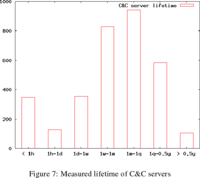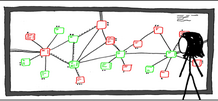 In quite a change from 2.5 years ago,
when Cisco went to great lengths to try to prevent Michael Lynn from revealing
details of Cisco’s code,
Cisco is opening its software:
In quite a change from 2.5 years ago,
when Cisco went to great lengths to try to prevent Michael Lynn from revealing
details of Cisco’s code,
Cisco is opening its software:
Since its debut more than 20 years ago, IOS has largely been a closed, proprietary, tightly guarded jewel in Cisco’s lockbox. But the company’s ambitions to make the network the platform for all IT operations and become a software force are in turn forcing Cisco to give up a little in return – like making IOS more than just a platform for Cisco-developed services.Wow, who could have imagined that technology architecture could be related to business architecture? Continue reading“It’s a significant step forward for us,” said Don Proctor, senior vice president of Cisco’s newly formed Software Group, at last week’s C-Scape 2007 analyst conference. “Software turns out to be a key way that we can do what [we’ve] been talking about for some time, which is link business architecture to technology architecture in a meaningful way.”
— Cisco opening up IOS, Looks to make software third-party friendly, Network World, 12/12/07





